Lake Shasta was home to Shastasaurus, sea lizards, these other prehistoric marine reptiles
Like the rest of the West Coast, far Northern California was under water when early dinosaurs roamed North America.
That doesn’t mean what would become Shasta County didn’t have its own amazing prehistoric critters, some likely just as fierce as any animals found on land.
Here are some of those North State beings that pre-dated humans by about 230 million years.
Meet the 'fish lizards'
Fossils found around Lake Shasta, the Pit River and other parts of the North State paint a picture of prehistoric beasts that would make even the most ferocious land-based dinosaur afraid of the water.
Ichthyosaurs — or "fish lizards" — migrated across the Pacific Ocean between North America and China 200-250 million years ago, according to the University of California, Berkeley Museum of Paleontology.
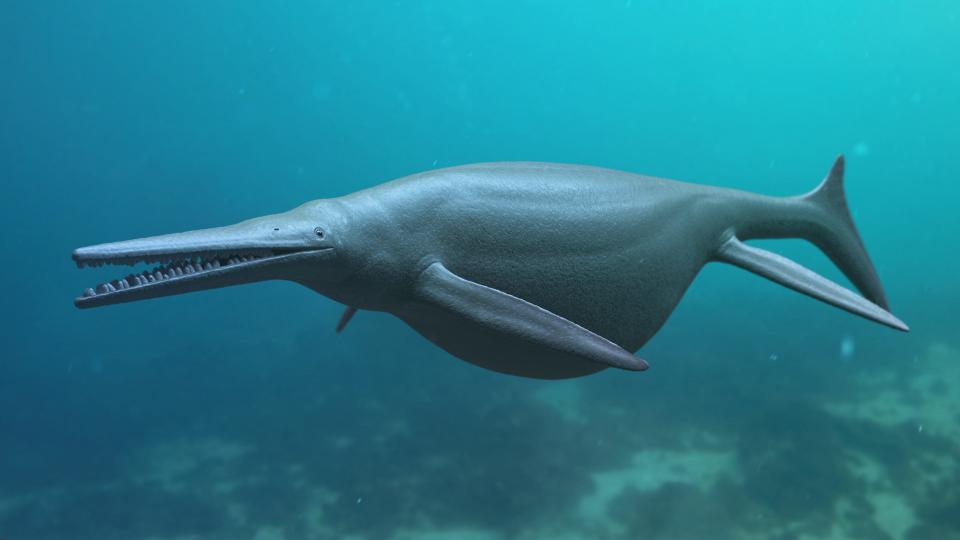
That's about the same time the first dinosaurs appeared on land in what would become North America, when the continent's West Coast "was somewhere in eastern Nevada,” said Neil Kelley, professor of paleontology at Vanderbilt University in Nashville, Tennessee.
These carnivorous marine reptiles swam in both shallow and deep waters, where they preyed on a variety of marine animals using their long snouts filled with teeth, U.C. Berkeley paleontologists said.
What we know about them is based on partial fossils of their bodies, but scientists believe they had fish-like shapes and could swim very fast.
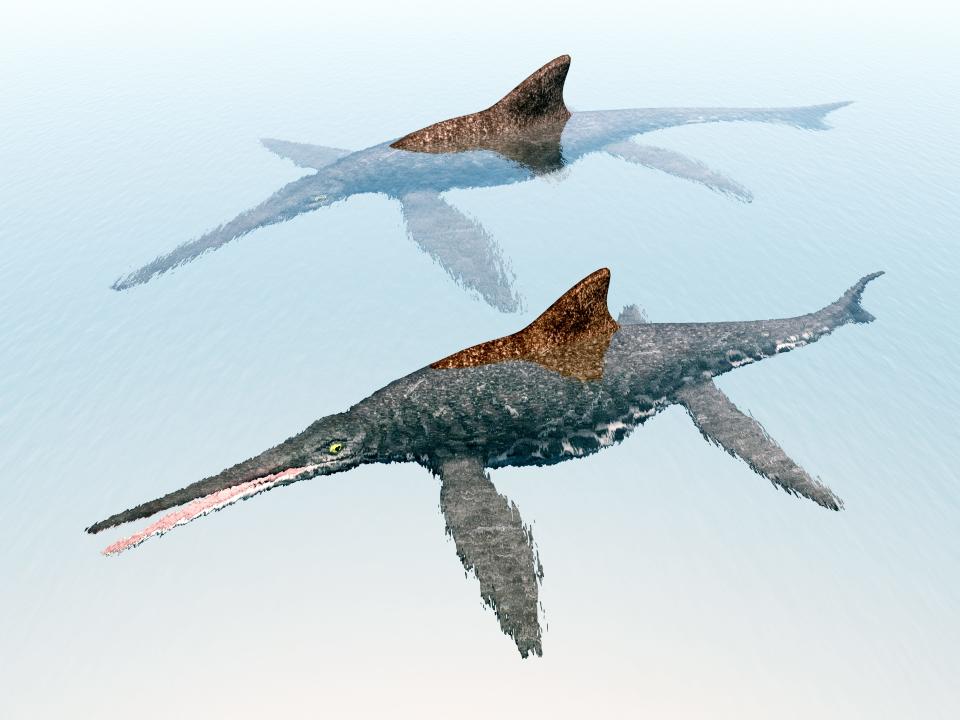
At least three species of ichthyosaur hunted in Shasta County’s salty waters during the Triassic period, about 227-233 million years ago, according to ichthyosaur expert U.C. Davis professor Ryosuke Motani.
Perhaps the best known to current North State residents is Shastasaurus, the "most primitive" of the North State's ichthyosaurs, Motani said.
According to Kelley, Shastasaurus lived about 220 million years ago in the Pacific Ocean, around the island chains that are now Shasta County. Fossil evidence suggests the animal averaged around 16 feet long, according to Motani, but some may have grown up to 70 feet long ― about the length of an adult sperm whale, according to Kelley.
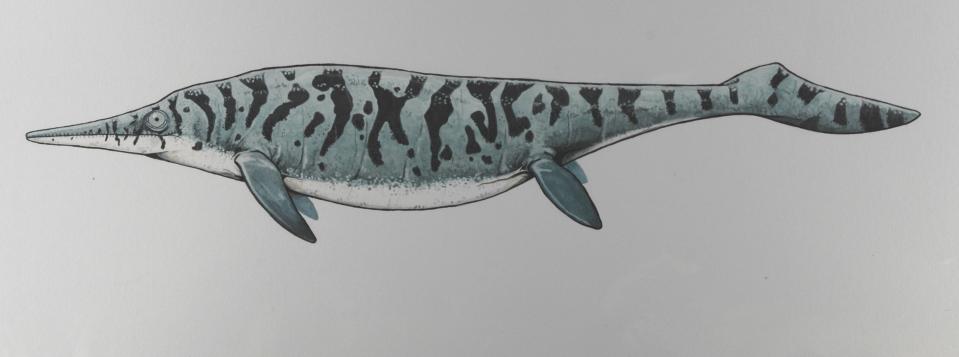
Note to readers: If you appreciate the work we do here at the Redding Record Searchlight, please consider subscribing yourself or giving the gift of a subscription to someone you know.
That would make Shastasaurus one of the largest marine reptiles ever found, Kelley said, and almost twice the length of the biggest Tyrannosaurus rex specimens, which reached 40 feet long from snout to tail tip ― about the length of a school bus, according to the American Museum of Natural History.
U.C. Berkeley has the first known collected Shastasaurus fossils, found between 1904 and 1905 in what is now the area around Lake Shasta, Kelley said.
But by 2016, scientists also found Shastasaurus fossils in northwestern Sonora, Mexico, evidence the animal lived outside California. These were also the first Triassic ichthyosaur fossils found in Mexico, according to paleontologists.
Two smaller ichthyosaurs also swam in prehistoric Shasta County's waters, according to Motani.
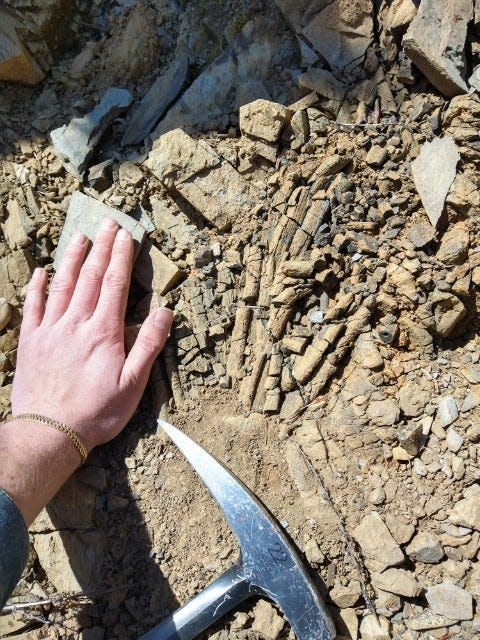
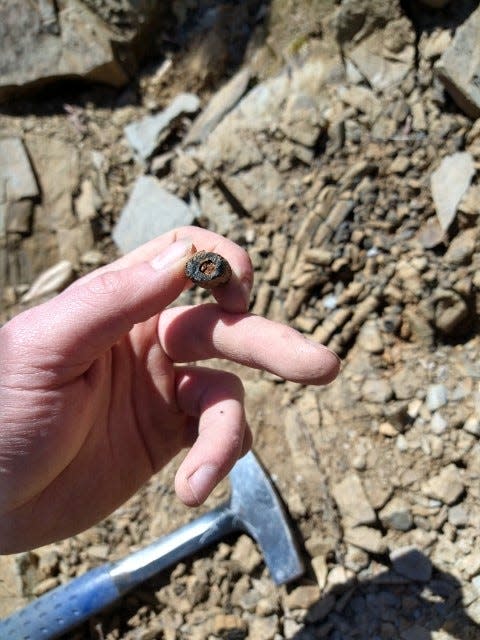
Paleontologists found skeletal fossil fragments of a creature dubbed Californosaurus near the Pit River. Dwarfed by its Lake Shasta counterpart, Californosaurus fossils suggest the animal was only about eight feet long, Motani said.
Another North State ichthyosaur was Toretocnemus. The most modern of the three ichthyosaurs, this extinct animal's length likely reached just about five feet, according Motani — but still big enough to spark the imagination of anyone wading into Lake Shasta today.
Toretocnemus fossils were first discovered along the Pit River between 1901 and 1903 by naturalist and explorer Annie Montague Alexander. The founder of U.C. Berkeley's paleontology and vertebrate zoology museums, Alexander donated her Toretocnemus samples to the paleontology museum, according to the school’s archives.
Sea lizard dined on Shasta shellfish
According to Motani, another extinct aquatic predator that called the North State home was Thalattosaurus, a name that means "sea lizard."
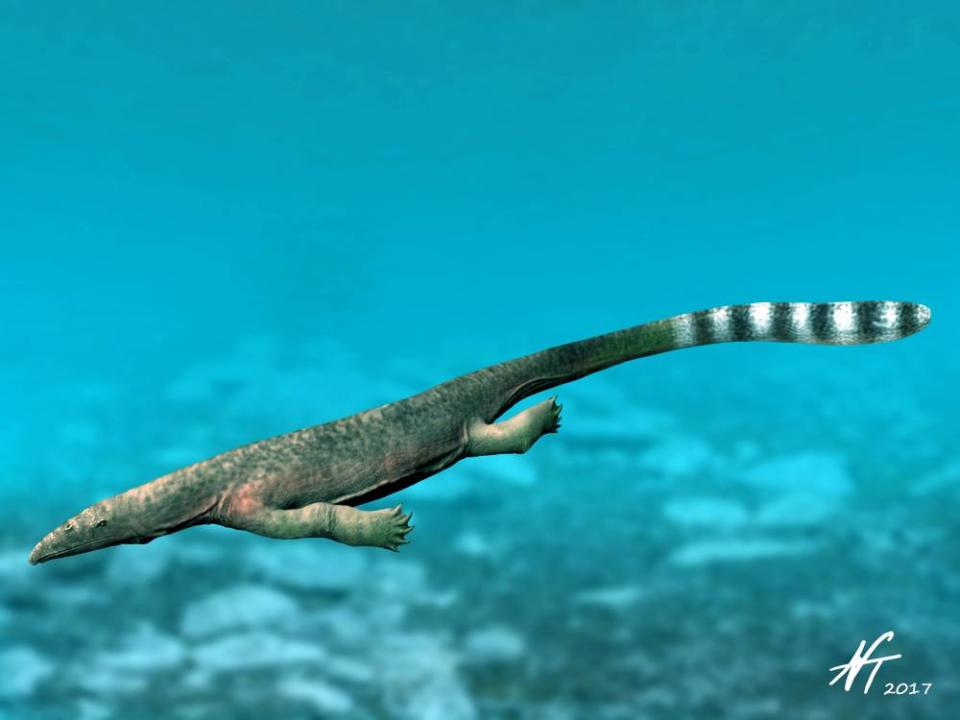
Reaching 10 feet long, Thalattosaurus fossils suggest the animal looked much like a lizard, but with webbed feet and a paddle-shaped tail to propel itself quickly through water, according to the University of Alaska.
According to scientists, this animal swam the Pacific Ocean, including along the West Coast from Alaska to California, possibly dining on shelled creatures including ammonites, another prehistoric Shasta County resident.
Shasta County’s extinct coiled critter
For more than a century, fossil hunters found ammonites in Shasta County, according to U.C. Berkeley expedition records.
But in 2021, paleontologists from the American Museum of Natural History in New York teamed up with Shasta County scientists and discovered ammonite fossils near Lake Shasta ― the only spot in California where scientists found fossil evidence of an ammonite species called Tropites subbullatus, said American Museum of Natural History field associate Jodi Summers.
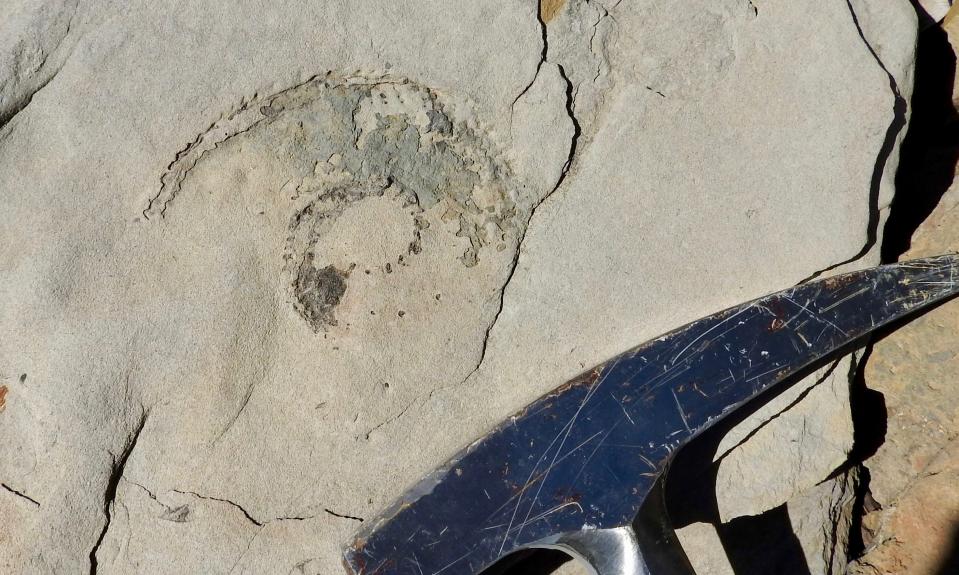
Ammonites lived in tightly-coiled shells made of rooms called chambers, according to Shasta College science professor Randy Reed. As the animal grew, it built bigger and bigger chambers to house its body. So over its lifespan, the coil grew, too.
“Although we lack fossilized soft parts for ammonites, we assume their bodies were similar to those of the chambered Nautilus,” which has a “fleshy head equipped with a beak and very well-developed eyes, clustered in the middle of tentacles used for catching prey,” according to the San Diego Natural History Museum.
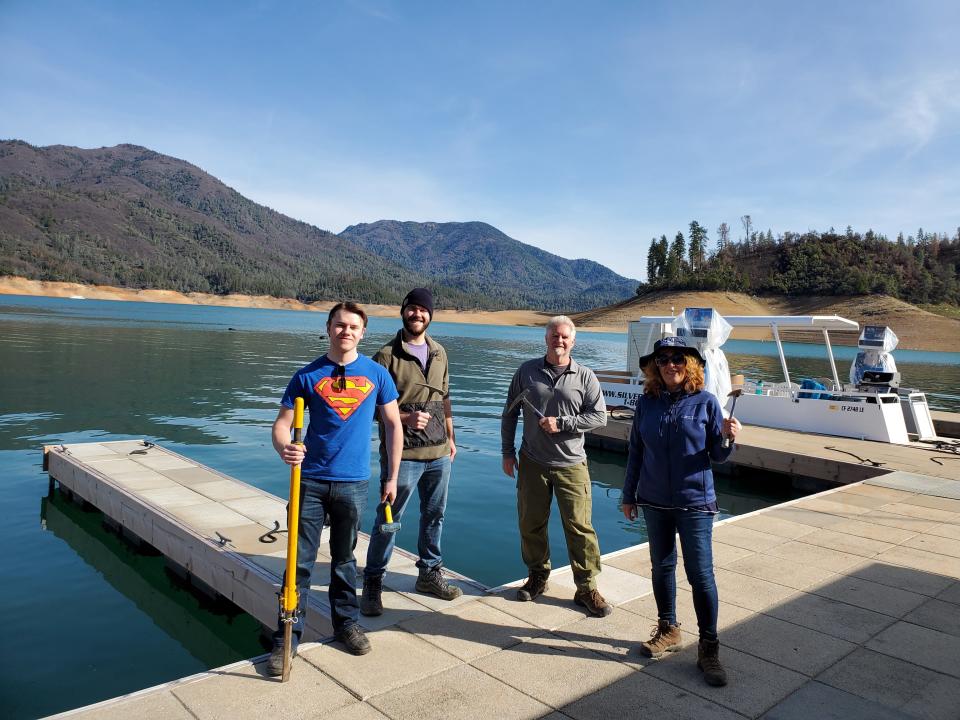
The closest living relatives to the now-extinct ammonites are likely cuttlefish, octopi and squid, said Reed, but ammonites looked a lot like a nautilus — a common modern mollusk that lives in deep tropical waters.
Fossil ammonites found in the North State range in size from half an inch to 18 inches across, according to Reed, while some found in other parts of the world are as big as three feet across.
Like Shastasaurus, the Shasta Lake ammonites lived during the Triassic Period, about 231 million years ago, Summers said.
Paleontologists have found other Triassic Period fossils throughout Shasta County, Reed said.
“This would be the beginning of the dinosaur period. While we had ammonites swimming around (Shasta County), Arizona had early dinosaurs tromping about the land,” said Reed.
For more information about prehistoric animals that lived in Northern California, go to the U.C. Museum of Paleontology website at ucmp.berkeley.edu.
Jessica Skropanic is a features reporter for the Record Searchlight/USA Today Network. She covers science, arts, social issues and news stories. Follow her on Twitter @RS_JSkropanic and on Facebook. Join Jessica in the Get Out! Nor Cal recreation Facebook group. To support and sustain this work, please subscribe today. Thank you.
This article originally appeared on Redding Record Searchlight: Lake Shasta was home to a chilling 'fish lizard' in prehistoric times

